
25 Engaging Role Playing Activities for Speech Development in Children
Role playing activities for speech development are not just fun—they’re a powerful tool to enhance your child’s language and communication skills. Through pretend play, children step into different roles, explore various scenarios, and practice speech in a supportive environment. In this article, we’ll delve into 25 engaging role playing activities designed to boost speech and language development, complete with practical examples tailored to specific speech challenges.
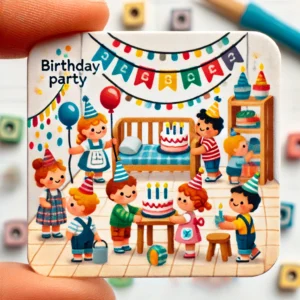
1. Birthday Party Planner
Activity: Children take turns planning a pretend birthday party, describing theme ideas, decorations, and activities.
Case Example: Ava, age 8, is working on her /th/ sound. As a party planner, she practices phrases like “themed decorations” and “birthday throne,” using her target sound in a natural context.

2. Doctor’s Office
Activity: One child acts as the doctor, while another is the patient.
Case Example: Tom, age 7, struggles with the /r/ sound. In this role playing activity, Tom asks questions like “Where does it hurt?” and instructs, “Rest and drink water,” helping him practice his speech therapy targets meaningfully.
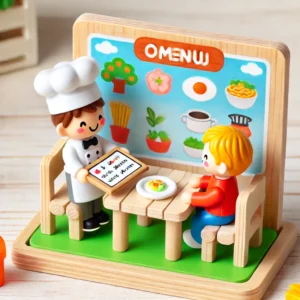
3. Restaurant Scene
Activity: Set up a pretend restaurant where one child plays the waiter or waitress, and another is the customer.
Case Example: Sarah, age 5, has difficulty with the /s/ sound. Playing the customer, she orders dishes like “salad,” “soup,” and “sauce,” integrating her target sounds into interactive play.
integrating her target sounds into interactive play.
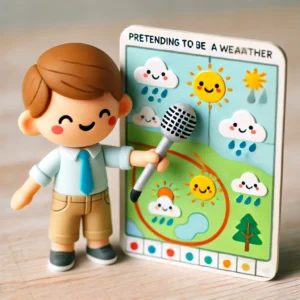
4. Weather Forecaster
Activity: The child pretends to be a TV weather reporter, describing current weather conditions and making predictions.
Case Example: Liam, age 6, is working on his /th/ sound. As a weather forecaster, he practices phrases like “It’s thirty-three degrees,” providing a fun way to improve his language development.
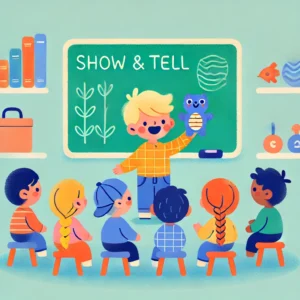
5. Show and Tell Salesperson
Activity: Children bring an item from home and pretend to be salespeople, describing and “selling” their item to others.
Case Example: Maya, age 8, is working on fluency. This activity allows her to practice speaking at a controlled pace, aiding in managing her stutter while engaging in communication skills activities.
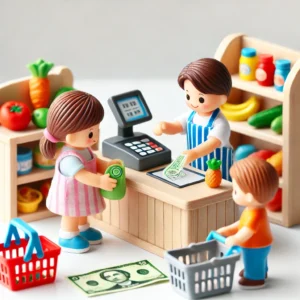
6. Grocery Store
Activity: Set up a pretend store where children can ask for items, discuss prices, and make purchases.
Case Example: Alex, age 4, is expanding his vocabulary. The grocery store introduces new words like “banana,” “cereal,” and “cart,” enhancing his speech and language development.
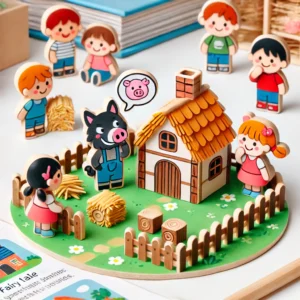
7. Fairy Tale Retelling
Activity: Children act out familiar stories, encouraging them to use dialogue and narration.
Case Example: Zoe, age 5, is working on sentence structure. Retelling “The Three Little Pigs,” she practices forming complete sentences and using conjunctions like “and” and “but” to connect ideas.
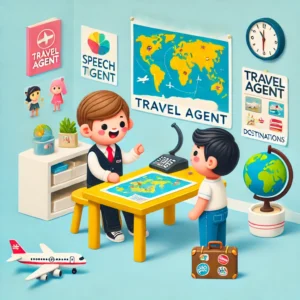
8. Travel Agent
Activity: One child is a travel agent, and another is a customer planning a vacation.
Case Example: Carlos, age 9, is focusing on his /l/ sound. As a travel agent, he describes destinations like “Lisbon,” “London,” and “Los Angeles,” integrating his target sound into engaging
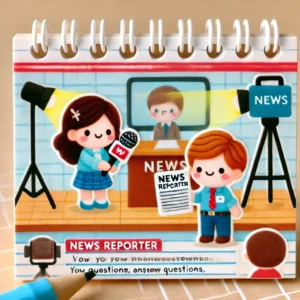
9. News Reporter
Activity: Children conduct “interviews” about recent events or daily life.
Case Example: Emma, age 7, is shy and struggles with initiating conversations. The news reporter role provides a structured way to ask questions and engage in dialogue, boosting her confidence.
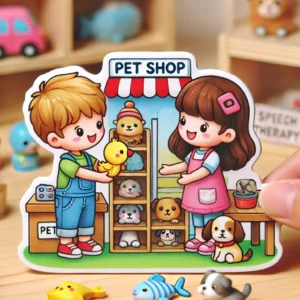
10. Pet Shop
Activity: One child is the shop owner, while others are customers looking to adopt pets.
Case Example: Jamal, age 6, is practicing his /sh/ sound. As the pet shop owner, he describes animals like “sheep” and “fish,” incorporating his target sound into conversations.
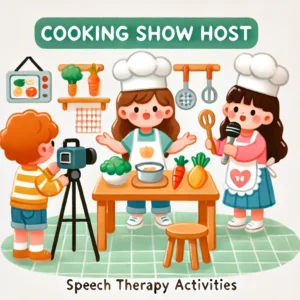
11. Cooking Show Host
Activity: Children pretend to host a cooking show, explaining recipes and cooking steps to an imaginary audience.
Case Example: Lily, age 8, is working on articulating multi-syllabic words. As a cooking show host, she practices words like “ingredient,” “temperature,” and “delicious,” improving her clarity in a fun context.
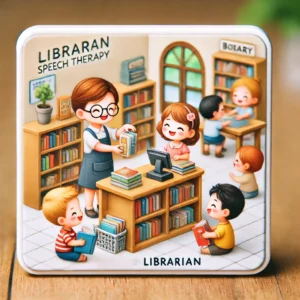
12. Librarian
Activity: Set up a mini-library where children can play the role of librarian, recommending and checking out books.
Case Example: Oliver, age 6, is practicing his /b/ and /p/ sounds. As a librarian, he focuses on words like “book,” “bear,” “pig,” and “panda,” refining his articulation.

13. Bus Driver
Activity: Create a pretend bus with chairs, where one child is the driver, and others are passengers.
Case Example: Mia, age 5, is practicing question formation. As a bus driver, she answers questions like “Where does this bus go?” and “When is the next stop?” enhancing her ability to form various types of questions.
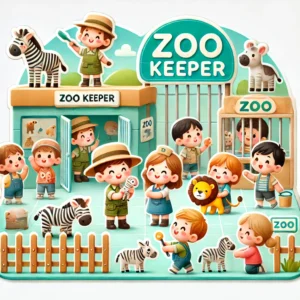
14. Zoo Keeper
Activity: Set up a pretend zoo where children act as zookeepers, describing animals and their habitats to visitors.
Case Example: Ethan, age 7, is working on his /z/ sound. As a zookeeper, he practices words like “zebra,” “zoo,” and “buzzard,” integrating his target sound into his descriptions.
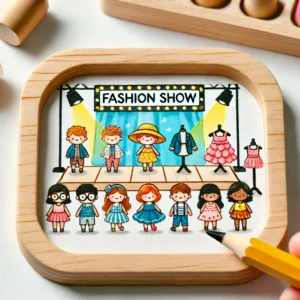
15. Fashion Show
Activity: Organize a pretend fashion show where children describe outfits and accessories.
Case Example: Sophia, age 9, is working on her /f/ sound. As a fashion show commentator, she describes “fabrics,” “fashions,” and “footwear,” providing multiple opportunities to practice her target sound.

16. Space Explorer
Activity: Create a space-themed setting where children act as astronauts, describing their mission and discoveries.
Case Example: Lucas, age 6, is focusing on his /s/ blends. As a space explorer, he practices words like “star,” “space,” and “asteroid,” improving his articulation.
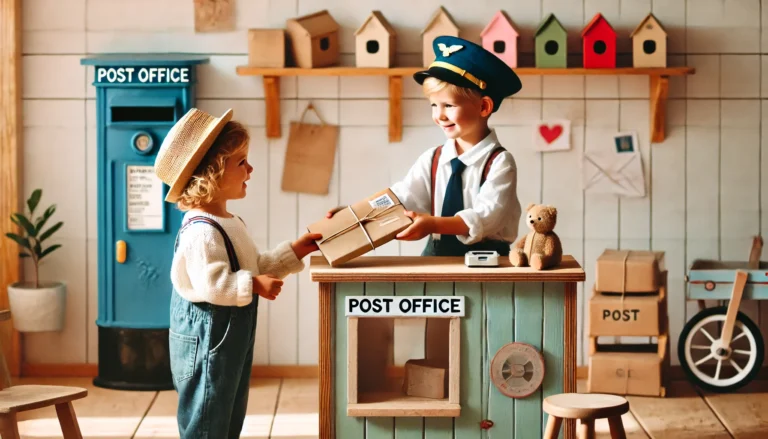
17. Birthday Party Planner
Activity: Children take turns planning a pretend birthday party, describing theme ideas, decorations, and activities.
Case Example: Ava, age 8, is working on her /th/ sound. As a party planner, she practices phrases like “themed decorations” and “birthday throne,” using her target sound in a natural context.
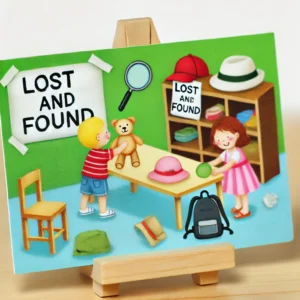
17. Lost and Found Office
Activity: Set up a pretend lost and found office where children describe lost items or inquire about their belongings.
Case Example: Noah, age 5, is developing his descriptive language skills. By detailing lost items—such as color, size, and shape—he expands his vocabulary and practices forming complex sentences.
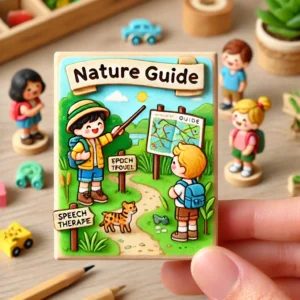
18. Nature Guide
Activity: Set up an indoor “nature trail” where children act as guides, describing plants, animals, and landscapes.
Case Example: Leo, age 6, is focusing on his /l/ sound. As a nature guide, he practices words like “leaf,” “flower,” and “butterfly,” enhancing his articulation in an educational context.

19. Toy Repair Shop
Activity: Create a pretend repair shop where children bring in “broken” toys and explain what needs fixing.
Case Example: Isabella, age 7, is practicing her /r/ sound. As the repair shop owner, she uses phrases like “broken arm” or “needs repainting,” integrating her target sound into conversations.
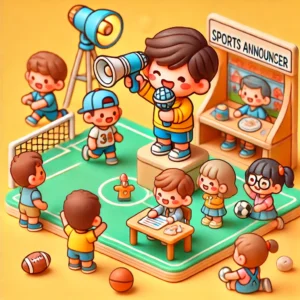
20. Sports Announcer
Activity: Children take turns being sports announcers, describing an imaginary game or match.
Case Example: Emma, age 9, is working on her fluency. As a sports announcer, she practices speaking at different paces and with varied intonation, aiding in managing her stutter.
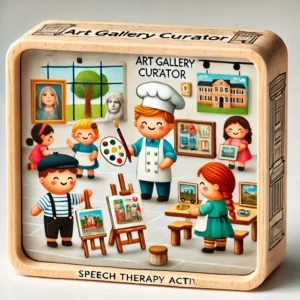
21. Art Gallery Curator
Activity: Set up a mini art gallery where children act as curators, describing paintings or sculptures to visitors.
Case Example: Daniel, age 8, is expanding his descriptive vocabulary. As an art curator, he uses adjectives and complex sentences to describe colors, shapes, and artistic styles.

22. Farmer’s Market Vendor
Activity: Create a pretend farmer’s market where children sell produce and describe their farming methods.
Case Example: Olivia, age 6, is practicing her /v/ sound. As a vendor, she practices words like “vegetables,” “harvest,” and “organic,” integrating her target sound into conversations.
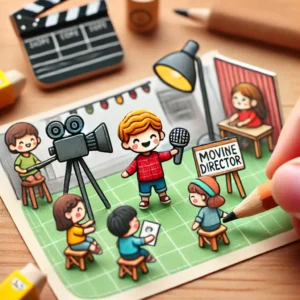
23. Movie Director
Activity: Children take turns being movie directors, explaining scenes and giving instructions to “actors.”
Case Example: Liam, age 7, is working on sentence formation. As a director, he gives clear, multi-step instructions, helping him construct more complex sentences.
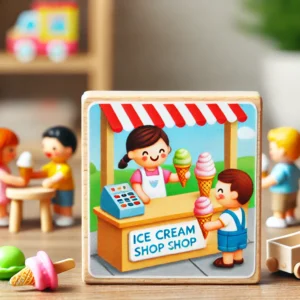
24. Ice Cream Shop Owner
Activity: Set up a pretend ice cream shop where children describe flavors and take orders from customers.
Case Example: Sophie, age 5, is working on her /s/ and /sh/ sounds. As the shop owner, she practices words like “strawberry,” “chocolate,” and “milkshake,” improving her articulation.

25. Detective Mystery
Activity: Children play detectives solving a mystery, asking questions, and describing clues.
Case Example: Jack, age 8, is working on his question formation and descriptive language. As a detective, he asks, “Where was the last place you saw it?” and describes clues, enhancing his communication skills.
Conclusion
These 25 role playing activities provide engaging, fun ways to support speech development in children. By incorporating these activities into both therapy sessions and everyday play, children can practice essential communication skills in a low-stress, enjoyable environment. Tailoring each activity to a child’s specific needs and interests will yield the best results. With creativity and consistent practice, these activities can play a significant role in helping children overcome speech challenges and develop strong communication skills.
